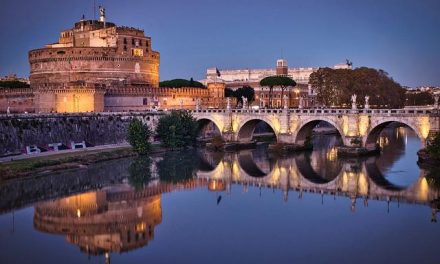Let’s dive into the breathtaking beauty of Yellowstone National Park and explore the best time to visit and witness its majestic nature. Located primarily in Wyoming, with parts spilling over into Montana and Idaho, Yellowstone is a nature lover’s paradise that mesmerizes visitors with its diverse landscapes, abundant wildlife, and awe-inspiring geothermal features. From the iconic Old Faithful geyser to the vibrant Grand Prismatic Spring, this national park offers a glimpse into the raw power and serene tranquility of nature. Whether you’re an avid hiker, wildlife enthusiast, or simply seeking solace in the wilderness, Yellowstone has something to offer everyone. So, grab your camera and a sense of adventure as we embark on an unforgettable journey through Yellowstone wonders.
Best Time to Visit Yellowstone National Park:
When planning a trip to Yellowstone, choosing the right time to visit is key to maximizing your experience and capturing nature’s grandeur at its finest. While the park is open year-round, each season brings its own unique charm and opportunities. However, for those seeking the ultimate Yellowstone adventure, the best time to visit is during the shoulder seasons of spring and fall.
Spring: A Symphony of Renewal:
As the snow begins to melt and nature awakens from its winter slumber, spring transforms Yellowstone into a vibrant wonderland. From mid-April to late May, the park bursts into life, with colorful wildflowers carpeting the meadows, cascading waterfalls roaring with newfound energy, and wildlife emerging from hibernation. It’s the perfect time to witness the annual migration of birds, such as the graceful trumpeter swans, and spot newborn animals exploring their surroundings. While the weather can be unpredictable, with occasional snowstorms and chilly temperatures, the serenity and beauty of the park make it a worthwhile adventure. Just be sure to pack layers and waterproof gear to adapt to changing conditions.
Fall: A Tapestry of Colors:
As the summer crowds disperse and the crisp air ushers in the arrival of autumn, Yellowstone dons a breathtaking cloak of vibrant colors. From mid-September to early November, the park’s foliage transforms into a mesmerizing palette of gold, crimson, and amber, creating a stunning backdrop for your adventures. Fall is also the ideal time to observe the park’s resident wildlife, as animals prepare for the harsh winter ahead. Keep your eyes peeled for elk bugling in the rutting season, bears foraging for berries, and majestic bison roaming the golden valleys. The weather during fall can be chilly, so be sure to pack warm clothing and prepare for occasional snow showers.
Summer: The Peak of Activity:
If you’re looking for warm weather and accessibility to the park’s expansive trail network, then summer is the season for you. From June to August, Yellowstone welcomes a flurry of visitors seeking outdoor adventures under the sun. The park’s meadows come alive with wildflowers, and the hiking trails beckon you to explore their hidden treasures. With longer daylight hours, you have ample time to witness the park’s iconic geothermal features, such as the famous Old Faithful geyser and the vibrant Grand Prismatic Spring. However, be prepared for larger crowds and limited accommodation options, as summer is the peak tourist season in Yellowstone. Make sure to book your accommodations well in advance and plan your itinerary to avoid the busiest times of the day.
Winter: A Serene Wonderland:
While winter may not be the most popular time to visit Yellowstone, it offers a truly magical experience for those seeking tranquility and solitude. From November to March, the park is transformed into a winter wonderland, with glistening snow-covered landscapes and frost-kissed geysers. The absence of crowds allows you to explore the park at your own pace, whether it’s cross-country skiing through pristine trails, embarking on a guided snowshoe tour, or witnessing the ethereal beauty of geothermal features encased in ice. While most of the park’s roads close for the winter season, the northern part of Yellowstone is accessible via guided snowmobile or snow coach tours. However, keep in mind that winter conditions can be harsh and unpredictable, so make sure to check the park’s official website for the latest updates and safety information.
Where to Stay in Yellowstone National Park:
As you plan your visit to Yellowstone, one crucial aspect to consider is your accommodation. The park offers a range of options to suit every traveler’s needs and preferences. From rustic campsites to cozy lodges, there’s something for everyone. Here are a few popular choices to consider:
- Yellowstone National Park Lodges: Managed by the park itself, these lodges offer a mix of modern amenities and proximity to key attractions. From the iconic Old Faithful Inn to the family-friendly Lake Yellowstone Hotel, these lodges provide an immersive experience in the heart of the park.
- Camping in Yellowstone: For nature enthusiasts and adventure seekers, camping in the park is an excellent way to fully immerse yourself in Yellowstone’s wilderness. With several campgrounds spread across the park, you can choose between primitive sites or those with more amenities.
- Gateway Towns: If you prefer staying outside the park, several gateway towns offer accommodations and easy access to Yellowstone. West Yellowstone and Gardiner in Montana, Cody in Wyoming, and West Thumb in Idaho are popular choices. These towns provide a range of lodging options, including hotels, cabins, and vacation rentals.
Must-See Attractions: best time to visit Yellowstone national park
No visit to Yellowstone would be complete without exploring its iconic attractions. Here are some must-see sights that will leave you in awe of nature’s grandeur:
- Old Faithful Geyser and Upper Geyser Basin: Witness the awe-inspiring eruptions of the legendary Old Faithful geyser, which has been delighting visitors for centuries. Explore the enchanting boardwalk trails of the Upper Geyser Basin, home to the largest concentration of geysers in the world.
- Grand Canyon of the Yellowstone: Marvel at the sheer power and beauty of the Yellowstone River as it carves its way through colorful canyon walls. Visit the mesmerizing Lower Falls and hike along the rim for breathtaking viewpoints.
- Grand Prismatic Spring: Behold the vibrant colors and otherworldly beauty of the Grand Prismatic Spring, the largest hot spring in the United States. The vivid hues of blue, green, and orange are a true testament to nature’s artistic prowess.
- Wildlife Watching: Yellowstone is home to an abundance of wildlife, including grizzly bears, wolves, elk, and bison. Be sure to explore the Lamar Valley, Hayden Valley, and the Northern Range for the best opportunities to spot these magnificent creatures in their natural habitat.
- Mammoth Hot Springs: Explore the surreal terraces of Mammoth Hot Springs, a captivating formation of mineral-rich travertine terraces that constantly evolve and change over time.
Safety Tips for Visiting Yellowstone: best time to visit Yellowstone national park
While Yellowstone’s natural wonders are undeniably captivating, it’s crucial to prioritize your safety and respect the park’s rules and guidelines. Here are some essential tips to ensure a safe and enjoyable visit:
- Know and Follow Park Regulations: Familiarize yourself with the park’s rules and regulations to ensure you have a safe and responsible visit. This includes staying on designated trails, not feeding wildlife, and properly disposing of waste.
- Stay Wildlife Aware: Yellowstone is home to a variety of wildlife, some of which can be dangerous. Keep a safe distance from animals and never approach or feed them. Use binoculars or a telephoto lens to observe wildlife from a safe distance.
- Prepare for Changing Weather: Yellowstone’s weather can be unpredictable, even in the summer. Pack layers and be prepared for sudden temperature drops, rain showers, or snowstorms. Always carry essential items like food, water, a map, and a flashlight.
- Stay on Marked Trails: Yellowstone’s diverse landscapes may tempt you to venture off-trail, but it’s important to stay on designated paths and boardwalks. Venturing into unauthorized areas can damage delicate ecosystems and pose safety risks.
- Be Bear Aware: Yellowstone is a bear country, and encounters with bears are a possibility. Carry bear spray, know how to use it, and make noise when hiking to alert bears of your presence. Store food and scented items in bear-resistant containers or hang them from a bear-safe height.
Exploring the Trails of Yellowstone:
One of the best ways to immerse yourself in the natural wonders of Yellowstone is by exploring its vast network of trails. Whether you’re a seasoned hiker or a casual stroller, the park offers trails of various difficulty levels and lengths. Here are a few popular hiking trails to consider:
- Fairy Falls Trail: This moderate 5.4-mile round trip trail leads you through a picturesque forest, culminating in the breathtaking Fairy Falls. Along the way, you’ll also catch glimpses of the Grand Prismatic Spring from a distance.
- Uncle Tom’s Trail: For a challenging but rewarding hike, tackle the Uncle Tom’s Trail that descends into the Grand Canyon of Yellowstone. This steep series of stairs offers stunning viewpoints of the Lower Falls, but be prepared for a strenuous climb back up.
- Artist Point Trail: If you’re seeking a shorter hike with spectacular views, the Artist Point Trail is a must-visit. This easy 0.6-mile loop takes you to Artist Point, offering panoramic vistas of the Lower Falls and the vibrant colors of the canyon.
- Mount Washburn Trail: For a more strenuous adventure, tackle the Mount Washburn Trail. This 6.2-mile round-trip trail takes you to the summit of Mount Washburn, where sweeping views of the park’s vast landscapes and wildlife await.
Capture the Magic: Photography Tips
Yellowstone’s ethereal beauty is a photographer’s dream, offering countless opportunities to capture stunning images. Whether you’re a professional photographer or simply capturing memories with your smartphone, here are a few tips to make the most of your photography ventures:
- Golden Hour Magic: Make the most of the magical light during the golden hour, which occurs shortly after sunrise and before sunset. The soft, warm glow during these times adds a magical touch to your photographs.
- Include Foreground Elements: To add depth and perspective to your photographs, include interesting foreground elements, such as wildflowers, rocks, or trees. These elements create a sense of scale and lead the viewer’s eye into the frame.
- Capture Wildlife Moments: Yellowstone is teeming with wildlife, providing endless opportunities for wildlife photography. Patience is key when photographing animals, so take your time, observe their behavior, and be prepared to capture special moments.
- Experiment with Long Exposures: If you want to capture the silky smooth flow of water in Yellowstone’s waterfalls or geothermal features, experiment with long exposure photography. Use a tripod and a neutral density filter to achieve longer shutter speeds.
- Shoot in RAW: To retain the maximum amount of detail and flexibility during post-processing, consider shooting in RAW format. RAW files allow you to adjust exposure, white balance, and other settings without degrading image quality.
Packing Essentials for Your Yellowstone Adventure:
When preparing for your Yellowstone adventure, packing the right gear and essentials can make a significant difference in your comfort and overall experience. Here’s a list of items you should consider packing:
- Layered Clothing: Yellowstone’s weather can vary dramatically throughout the day, so be prepared for fluctuating temperatures by packing layered clothing. This includes thermal base layers, fleece jackets, waterproof outer shells, and warm hats and gloves.
- Sturdy Hiking Shoes: With its diverse landscapes and rugged trails, a pair of sturdy and comfortable hiking shoes is a must for exploring Yellowstone. Opt for waterproof shoes or boots to keep your feet dry during unexpected rainfall or snow showers.
- Binoculars and Camera Gear: To make the most of your wildlife sightings and capture stunning photographs, pack binoculars and camera gear suitable for your needs. From powerful telephoto lenses to compact point-and-shoot cameras, choose equipment that suits your photography goals.
- Sunscreen and Insect Repellent: Protect yourself from the sun’s harmful rays and pesky insects by packing sunscreen with a high SPF and a reliable insect repellent. The high elevation of Yellowstone can intensify the sun’s effects, so be sure to reapply sunscreen regularly.
- Reusable Water Bottle and Snacks: Stay hydrated and energized during your adventures by carrying a reusable water bottle and nutritious snacks. There are several water refill stations throughout the park.
Conclusion:
Choosing the right and best time to visit Yellowstone National Park is crucial for an unforgettable experience. Whether you’re captivated by the park’s diverse wildlife, mesmerized by its geothermal wonders, or simply seeking a tranquil escape, timing can make all the difference. From the bustling summer months to the serene beauty of the off-peak seasons, each period offers a unique perspective of this natural wonderland. By considering your preferences for crowd levels, weather conditions, and specific attractions, you can tailor your visit to align with your interests. No matter when you choose to go, Yellowstone’s unparalleled beauty and captivating landscapes are sure to leave you with lasting memories and a deep appreciation for the wonders of the natural world. For more, visit JourneyIndex.




